Coeur d’Alene National Forest
- January 31, 2024
- 0 comment
Explore Coeur d’Alene National Forest in Idaho for breathtaking landscapes, diverse wildlife, and endless outdoor adventures. Located in the scenic heart of Idaho, the Coeur d’Alene National Forest is a majestic natural wonder that captures the essence of the American wilderness. Spanning over a vast area, this forest is a tapestry of lush greenery, crystal-clear lakes, and rugged mountains.
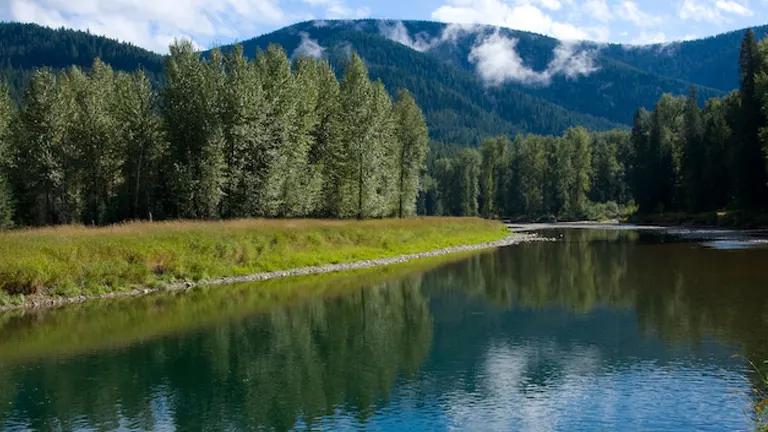
Established in the early 20th century, it has since been a haven for nature enthusiasts and adventurers alike. From its rich history entwined with the mining and timber industries to its present-day allure for hiking, camping, and wildlife watching, Coeur d’Alene National Forest offers an immersive experience into the serene and untamed beauty of nature.
Characterizing Features of Coeur d’Alene National Forest
- Diverse Topography: The Coeur d’Alene National Forest is marked by its striking topographical diversity. From rolling hills to rugged mountain ranges, the landscape offers a variety of elevations and terrains. The forest is nestled within the Bitterroot Range, part of the larger Rocky Mountains, providing spectacular scenic vistas. This variation in elevation not only contributes to the scenic beauty but also supports a wide range of habitats, making it a hotspot for biodiversity.
- Extensive Water Systems: Water is a defining element of this forest, with its numerous lakes, rivers, and streams. The centerpiece is Lake Coeur d’Alene, renowned for its crystal-clear waters and recreational opportunities. These water bodies are vital for the ecosystem, supporting both aquatic life and land-based species, and they also play a critical role in shaping the forest’s unique landscape. The presence of these water systems adds a serene beauty to the area and is a major draw for tourists and nature enthusiasts.
- Rich Forest Cover: Coeur d’Alene National Forest boasts a dense and diverse forest cover, primarily consisting of coniferous trees such as Western White Pine, Ponderosa Pine, and Douglas Fir. This rich forest cover provides habitat for numerous wildlife species and is integral to the ecological balance of the region. The undergrowth is lush, featuring a variety of shrubs and wildflowers, adding to the forest’s biodiversity and visual appeal.
- Wildlife Habitat: The forest serves as a crucial habitat for a wide range of wildlife. It is home to various mammal species like elk, deer, black bears, and, occasionally, grizzly bears. The area is also a haven for birdwatchers, with species such as the Bald Eagle and Osprey frequently sighted. This abundance of wildlife is a testament to the healthy and well-preserved ecosystem of the forest, making it a crucial area for conservation efforts and wildlife research.
- Recreational Hub: Beyond its natural beauty and ecological importance, Coeur d’Alene National Forest is a hub for outdoor recreation. The forest caters to a multitude of activities, including hiking, camping, fishing, and boating. Its well-maintained trail system, scenic campgrounds, and access to waterways provide visitors with endless opportunities to engage with the natural environment. This aspect of the forest highlights its role not only as a natural sanctuary but also as a space for human recreation and connection with nature.
History of Coeur d’Alene National Forest
The origins of Coeur d’Alene National Forest trace back to the early 20th century, marked by a period of significant transformation in the United States’ approach to land management and conservation. Established in 1906 under President Theodore Roosevelt’s administration, the forest became part of a nationwide effort to preserve and manage public lands. Initially, the focus was on resource extraction, with timber and mining industries playing a pivotal role in the region’s development. This period saw the growth of local communities, driven by the economic activities centered around the forest’s natural resources.
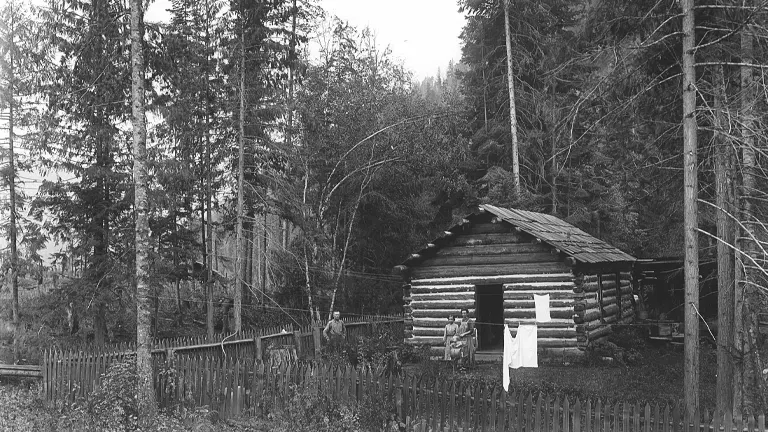
As conservation ideas evolved throughout the 20th century, the management of Coeur d’Alene National Forest shifted towards a more balanced approach, prioritizing ecological sustainability alongside resource use. Efforts were made to protect the forest’s diverse ecosystems, leading to the implementation of practices like controlled burns and sustainable logging. This change mirrored a growing national awareness of the importance of preserving natural landscapes for future generations. Today, Coeur d’Alene National Forest stands as a testament to these conservation efforts, balancing the needs of human use with the imperative to maintain ecological integrity. The forest’s history is not only a story of resource utilization but also one of environmental stewardship and the evolving relationship between humans and nature.
Unique Ecosystem of Coeur d’Alene National Forest
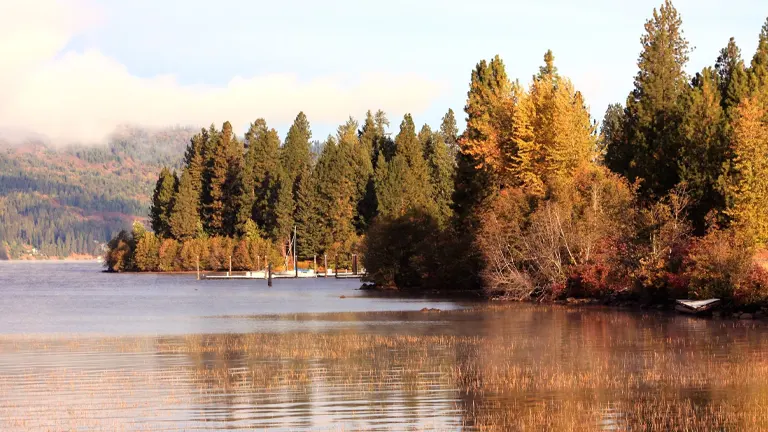
The Coeur d’Alene National Forest boasts a unique ecosystem characterized by its rich biodiversity and complex interdependencies among various species and habitats. This forest is a mosaic of dense coniferous stands, open meadows, and extensive wetland systems, each supporting a distinct array of flora and fauna. Notably, it serves as an important habitat for a variety of wildlife, including large mammals like elk and bears, and numerous bird species, notably the Bald Eagle. The forest’s water bodies, including the prominent Lake Coeur d’Alene, play a crucial role in sustaining this biodiversity, offering vital resources for both aquatic and terrestrial life. This dynamic and intricate ecosystem is a result of the forest’s varied topography, climate, and natural history, making it a significant area for ecological study and conservation efforts.
Location of Coeur d’Alene National Forest
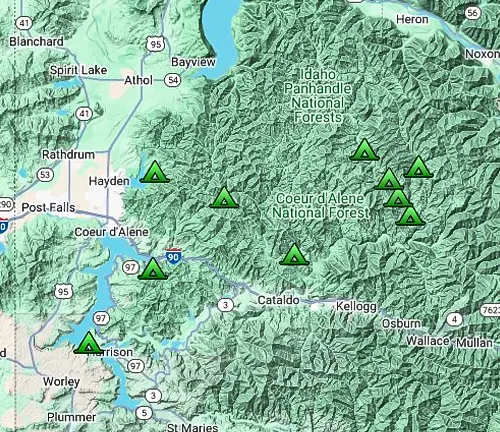
Coeur d’Alene National Forest is located in the panhandle of Idaho, USA, encompassing a substantial portion of the state’s northern region. It lies to the east of Spokane, Washington, making it easily accessible from major urban centers. The forest is part of the broader Idaho Panhandle National Forests, stretching over diverse landscapes that include mountains, lakes, and rivers. Its position within the Rocky Mountain range contributes to its varied elevation and rich biodiversity. This strategic location combines the forest’s natural beauty with accessibility, making it a popular destination for both recreational activities and ecological studies.
Guide to Getting to Coeur d’Alene National Forest
By Car from Spokane, Washington:
- The most direct route is via Interstate 90 East.
- It takes approximately an hour to reach the western edge of the forest.
- Exit 15 for Sherman Avenue leads directly into the Coeur d’Alene area.
By Air to Spokane International Airport:
- Fly into Spokane International Airport if traveling from afar.
- Rent a car at the airport; numerous rental agencies are available.
- Drive east on Interstate 90 to reach the forest.
Via Public Transportation:
- Limited bus services are available from Spokane and other nearby cities.
- Check with the Spokane Transit Authority for routes to Coeur d’Alene city.
- From Coeur d’Alene city, local transportation or taxis can be used to reach specific areas within the forest.
By Car from Other Idaho Locations:
- From southern Idaho (e.g., Boise), take Interstate 84 West to Interstate 90 East.
- For travelers from eastern Idaho, use US Highway 95 North, which directly passes through Coeur d’Alene.
Hiking or Biking In:
- For adventurers, the Trail of the Coeur d’Alenes offers a scenic bike path.
- Hiking trails also connect to the forest from various surrounding areas.
The Importance of Conservation and Recreation in Coeur d’Alene National Forest
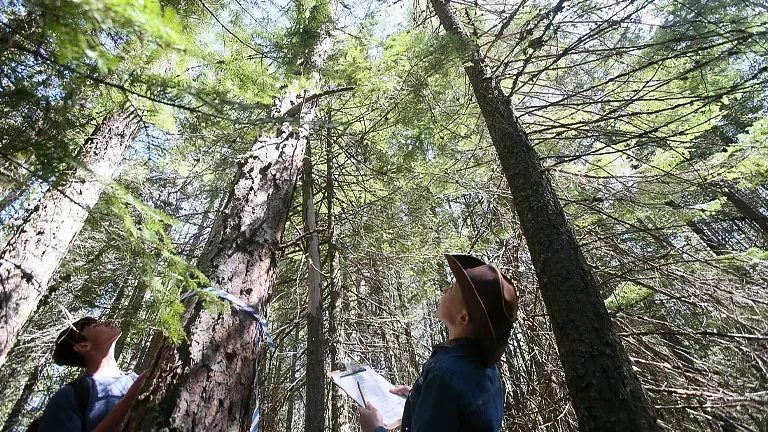
The Coeur d’Alene National Forest epitomizes the critical balance between conservation and recreation, serving as a vital natural resource and a recreational haven. Conservation efforts in the forest focus on preserving its diverse ecosystems, protecting wildlife habitats, and sustaining its natural beauty for future generations. These efforts are complemented by recreational activities, carefully managed to minimize environmental impact while providing public enjoyment and education. This dual focus not only enhances the forest’s ecological health but also fosters a deeper public appreciation for the importance of environmental stewardship. As such, Coeur d’Alene National Forest stands as a model for how natural areas can be responsibly used and preserved, demonstrating the synergy between conservation and recreational use.
Diverse Vegetation and Plant Species in Coeur d’Alene National Forest
- Western White Pine (Pinus monticola): The Western White Pine, Idaho’s state tree, is prominent in the forest. This towering conifer is known for its straight trunk and long, slender needles, playing a critical role in the forest’s ecosystem by providing habitat and maintaining soil stability.
- Ponderosa Pine (Pinus ponderosa): Common in the forest’s lower elevations, the Ponderosa Pine is recognizable by its thick, orange-brown bark and tall stature. It’s an important species for wildlife, offering both shelter and food sources.
- Douglas Fir (Pseudotsuga menziesii): This evergreen species is another dominant tree in the forest. Known for its conical shape and dense foliage, the Douglas Fir contributes significantly to the forest’s biomass and serves as a key habitat for many bird species.
- Western Red Cedar (Thuja plicata): Thriving in moist, shady areas, the Western Red Cedar is known for its aromatic wood and lush foliage. This tree is culturally significant to Indigenous peoples and provides important cover for wildlife.
- Huckleberries (Vaccinium spp.): Huckleberries are a staple in the undergrowth of the forest. These small, edible berries are not only a favorite among visitors but also a vital food source for the local wildlife, including bears and birds.
- Wild Ginger (Asarum caudatum): This low-growing, shade-loving plant is known for its distinctive heart-shaped leaves and unique, reddish-brown flowers. Wild Ginger contributes to the forest’s understory diversity and serves as an important component of the ecosystem.
- Sword Fern (Polystichum munitum): Commonly found in the forest’s damp areas, the Sword Fern is recognizable by its long, sword-shaped fronds. This fern adds to the visual appeal of the forest floor and provides habitat for various small insects and animals.
- Serviceberry (Amelanchier alnifolia): Serviceberry, with its white blossoms and edible berries, is a significant native shrub. It provides food for birds and mammals and is valued for its ornamental and ecological contributions to the forest landscape.
- Fireweed (Chamerion angustifolium): Often one of the first plants to emerge after disturbances like forest fires, Fireweed is notable for its vibrant pink flowers and resilience. It plays a role in soil stabilization and regeneration of disturbed sites within the forest.
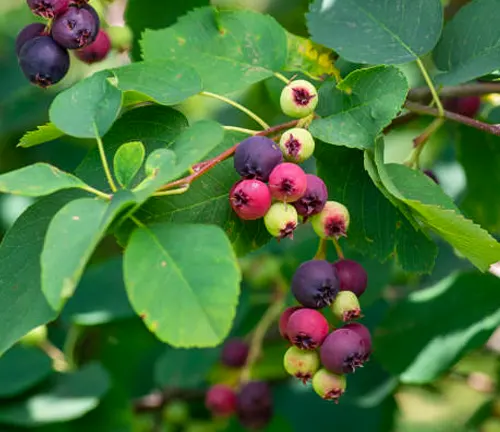
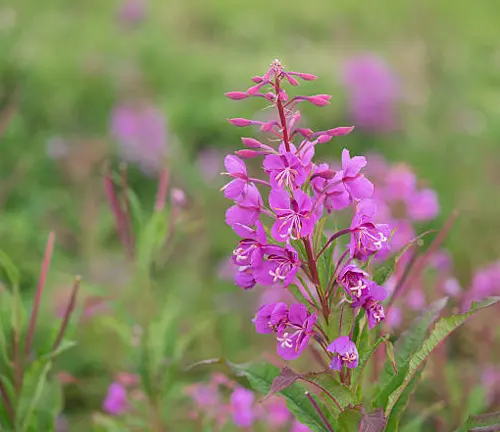
Fauna in Coeur d’Alene National Forest
- Elk (Cervus canadensis): Elk are one of the most majestic mammals in the forest. These large herbivores are essential to the ecosystem, influencing vegetation dynamics and serving as prey for predators. They are often seen grazing in meadows or forest clearings.
- Grizzly Bear (Ursus arctos horribilis): While less common, the presence of Grizzly Bears is a sign of the forest’s healthy and intact ecosystem. As a top predator, they play a crucial role in maintaining the balance of the forest’s food web.
- Mountain Lion (Puma concolor): Also known as cougars, these elusive predators are an integral part of the forest’s ecosystem. They help control the population of herbivores like deer, maintaining a balance in the natural environment.
- Bald Eagle (Haliaeetus leucocephalus): A symbol of America’s wildlife, Bald Eagles are often spotted near the forest’s lakes and rivers. They rely on these water bodies for fishing, and their presence indicates a healthy aquatic ecosystem.
- Osprey (Pandion haliaetus): Ospreys, also known as fish hawks, are commonly seen fishing in the forest’s waterways. Their nesting habits and fishing prowess make them a fascinating species for birdwatchers.
- American Black Bear (Ursus americanus): More common than the Grizzly, Black Bears are a key species in the forest. They play a significant role in seed dispersal and are a popular species for wildlife enthusiasts.
- White-Tailed Deer (Odocoileus virginianus): A common sight, these deer are vital for the ecological balance, serving as prey for larger predators. They are also important for their role in plant seed dispersal and vegetation control.
- Red Fox (Vulpes vulpes): The Red Fox, with its distinctive bushy tail and reddish coat, is a versatile predator in the forest. They contribute to controlling small mammal populations and are known for their adaptability to different environments.
- Pileated Woodpecker (Dryocopus pileatus): This large woodpecker is notable for its striking appearance and role in the ecosystem. By drilling into trees, they create habitats for other species and help control insect populations.
- Western Toad (Anaxyrus boreas): An indicator species for environmental health, the Western Toad is found in the forest’s wetlands and water bodies. Their presence signifies a healthy aquatic ecosystem and they play a role in insect control.
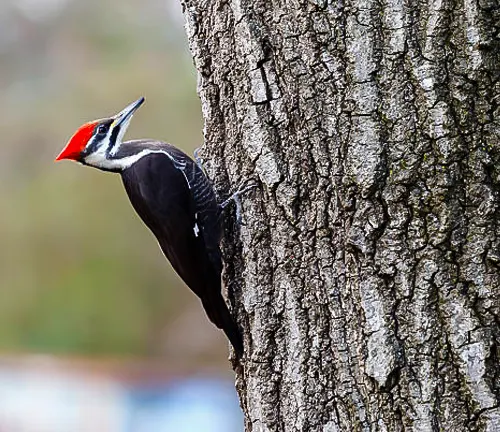
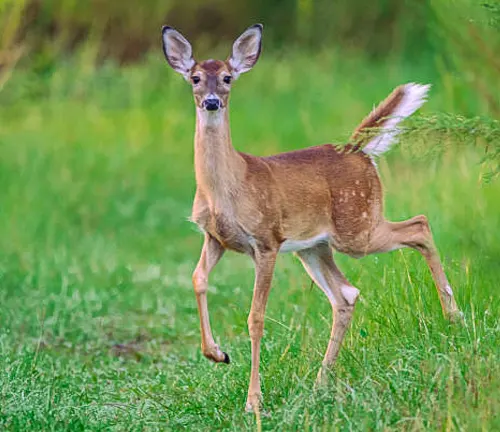
Attractions in Coeur d’Alene National Forest
Lake Coeur d’Alene: Lake Coeur d’Alene is arguably the crown jewel of the forest. This stunning lake is renowned for its crystal-clear waters and scenic beauty. Visitors can enjoy boating, fishing, and swimming in the lake, or simply relax on its shores to soak in the breathtaking views. The lake also hosts a variety of wildlife, making it a perfect spot for nature photography and bird watching.
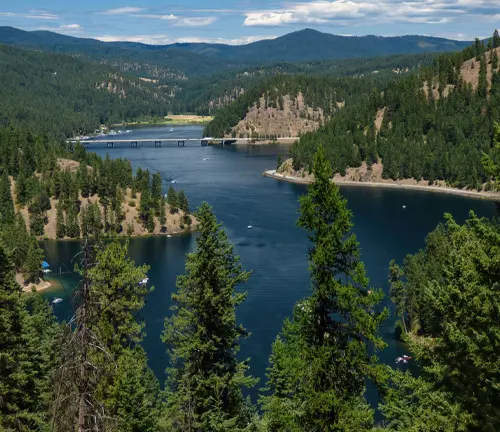
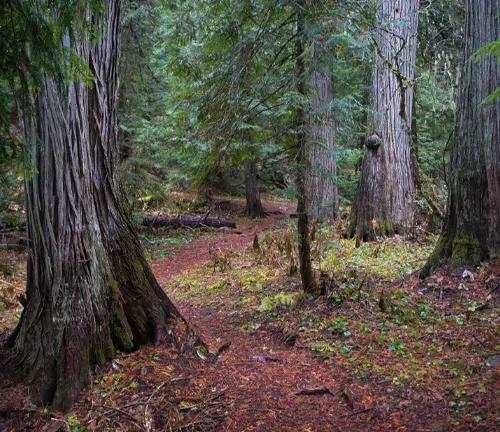
Roosevelt Grove of Ancient Cedars: This grove is home to old-growth cedar trees, some of which are over 800 years old, offering a unique glimpse into the ancient past of the forest. Walking among these towering giants provides a sense of awe and a connection to the history of the land. The grove is accessible via a serene hiking trail, making it a perfect destination for those looking to experience the forest’s tranquility and natural beauty.
Trail of the Coeur d’Alenes: The Trail of the Coeur d’Alenes is a 72-mile paved trail that stretches across the Idaho panhandle. Ideal for biking, hiking, and inline skating, this trail offers a leisurely way to explore the varied landscapes of the forest. It passes through wetlands, along rivers, and by historic mining towns, providing a comprehensive tour of the region’s natural and cultural heritage.
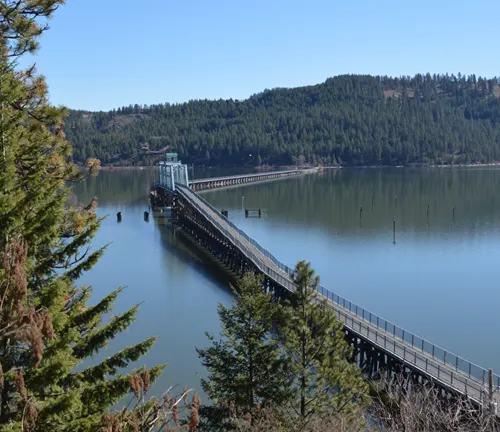
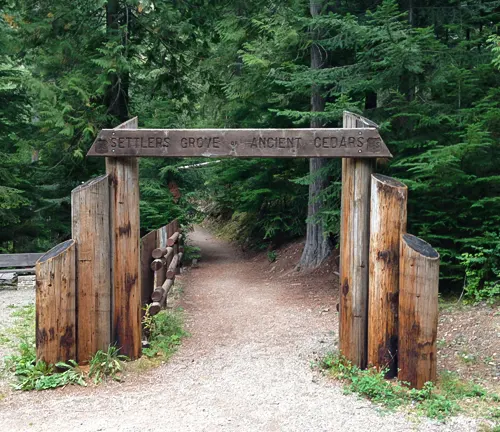
Settler’s Grove: Settler’s Grove is another must-visit for those interested in ancient forests. This attraction is known for its old-growth cedar and hemlock trees. The grove is accessible through a tranquil hiking trail, where visitors can immerse themselves in the lush greenery and serenity of the forest.
Mineral Ridge Trail: For those seeking a more active adventure, the Mineral Ridge Trail offers a moderate hike with rewarding views of Lake Coeur d’Alene. The trail is famous for its wildlife viewing opportunities, especially the chance to see Bald Eagles, particularly during their winter migration.

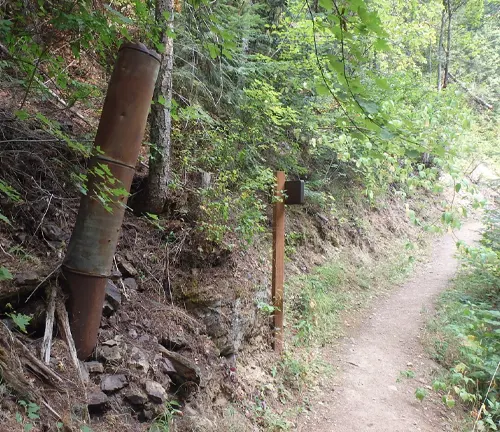
Pulaski Tunnel Trail: This trail is steeped in history, leading to the site where Ed Pulaski, a famous firefighter, saved his crew during the Great Fire of 1910. The trail not only offers historical insights but also provides stunning views of the surrounding forest and terrain.
Lookout Pass Ski and Recreation Area: In the winter months, Lookout Pass offers excellent opportunities for skiing and snowboarding. The area is known for its family-friendly atmosphere and receives abundant snowfall, making it a popular winter sports destination.
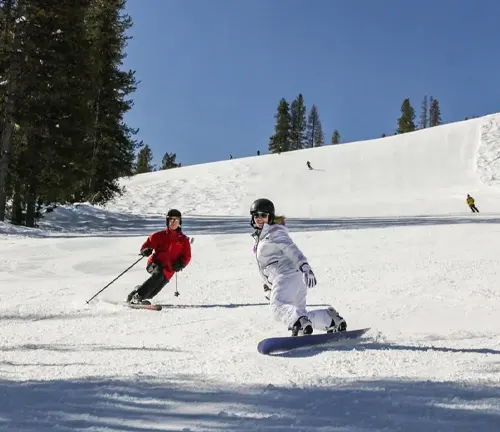
Recreational Activities in Coeur d’Alene National Forest
- Hiking: Coeur d’Alene National Forest offers a diverse array of hiking trails, catering to all skill levels. From gentle walks through ancient cedar groves to more strenuous treks up rugged mountains, the trails allow hikers to explore the forest’s diverse landscapes. The trails not only provide physical challenge and adventure but also opportunities to witness the rich flora and fauna of the region.
- Camping: With numerous campgrounds scattered throughout the forest, camping is a popular activity. These range from developed sites with amenities to more primitive backcountry areas for those seeking a rugged experience. Camping in the forest offers a chance to fully immerse oneself in nature, whether it’s a family trip or a solo adventure.
- Boating and Fishing: Lake Coeur d’Alene and the forest’s many rivers and streams are ideal for boating and fishing enthusiasts. The water bodies are home to a variety of fish species, providing excellent fishing opportunities. Boating allows visitors to explore the aquatic landscapes and enjoy the forest from a different perspective.
- Wildlife Viewing and Bird Watching: The forest’s rich biodiversity makes it a haven for wildlife viewing and bird watching. From spotting elk and deer in the meadows to observing birds of prey like the Bald Eagle, the forest offers ample opportunities for wildlife enthusiasts to observe animals in their natural habitat.
- Mountain Biking: For those seeking a more adrenaline-fueled activity, mountain biking is a great option. The Trail of the Coeur d’Alenes, along with other trails, offer a range of terrain for mountain biking, from easy rides to challenging paths, providing a thrilling way to explore the forest.
- Winter Sports: During winter, Coeur d’Alene National Forest transforms into a playground for winter sports. Lookout Pass Ski Area, for instance, provides opportunities for skiing and snowboarding. The forest’s terrain also makes it suitable for cross-country skiing and snowshoeing, allowing visitors to enjoy the winter beauty of the area.
- Photography and Nature Study: The forest’s stunning landscapes and diverse wildlife make it a perfect destination for photography and nature study. Whether capturing the sunrise over Lake Coeur d’Alene or studying the unique flora of the region, enthusiasts can find endless subjects for exploration and photography.

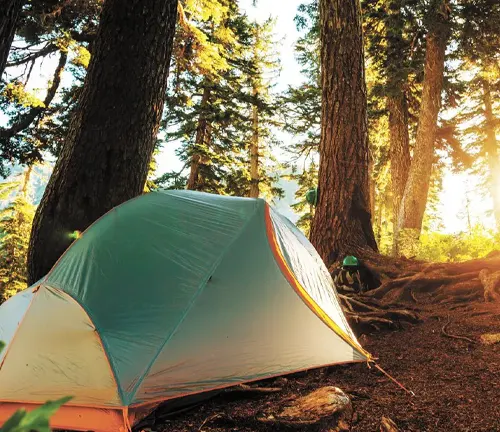
Different Facilities and Amenities in Coeur d’Alene National Forest
- Developed Campgrounds: The forest offers several developed campgrounds equipped with facilities such as restrooms, picnic tables, and fire pits. These campgrounds are designed for convenience and comfort, making them ideal for families and less experienced campers. They provide a safe and accessible way to enjoy the natural beauty of the forest, whether for overnight stays or longer camping trips.
- Picnic Areas: Scattered throughout the forest are numerous picnic areas, perfect for day visitors. These areas often feature picnic tables, barbecue grills, and sometimes playgrounds, making them ideal for family outings and group gatherings. They provide a relaxing way to enjoy the forest’s serene environment and are often located near scenic spots or trailheads.
- Boat Ramps and Fishing Docks: Given the abundance of water bodies in the forest, there are several boat ramps and fishing docks available. These facilities cater to anglers and boating enthusiasts, providing easy access to lakes and rivers. They are strategically placed to offer visitors the best fishing spots and boating experiences in the heart of the forest’s aquatic environments.
- Hiking Trailheads: The forest is crisscrossed with trails, and many have well-marked trailheads, offering access to a range of hiking experiences. These trailheads often include parking areas, information boards, and sometimes restroom facilities. They serve as starting points for exploring the forest’s diverse landscapes, from gentle walks to challenging hikes.
- Visitor Centers: Visitor centers in the forest provide a wealth of information about the area’s history, ecology, and recreational opportunities. Staffed by knowledgeable personnel, these centers offer maps, educational displays, and advice on making the most of a visit to the forest. They are invaluable resources for first-time visitors and those looking to deepen their understanding of the forest’s natural and cultural heritage.
- Overnight Cabins: For a more comfortable camping experience, the forest offers rental cabins. These range from rustic to moderately equipped, providing a unique way to experience the forest with some basic comforts of home. Cabins are especially popular among those who prefer a more contained and less rugged overnight stay in the wilderness.
- Wildlife Viewing Areas: Designated wildlife viewing areas are established throughout the forest. These spots are chosen for their likelihood of wildlife presence, giving visitors a chance to observe animals in their natural habitat. These areas are often equipped with interpretive signs, providing educational insights into the wildlife and ecosystems of the forest.
- Restrooms and Sanitation Facilities: Across the forest, especially in developed areas like campgrounds and picnic sites, restrooms and sanitation facilities are available. These facilities are maintained to ensure hygiene and convenience for visitors, contributing to a comfortable and enjoyable outdoor experience.
Tips and Advice for Visiting Coeur d’Alene National Forest
- Check Weather and Seasonal Conditions: Before visiting, it’s crucial to check the current weather and understand the seasonal conditions of the forest. Weather in the mountains can be unpredictable, and being prepared for sudden changes is important. In winter, snow and ice can make trails and roads challenging, while summer may bring heat and the risk of forest fires. Appropriate clothing and gear for the expected conditions will ensure a safer and more enjoyable visit.
- Respect Wildlife and Maintain Distance: The forest is home to a diverse array of wildlife, and while encounters can be exciting, it’s important to respect the animals’ space. Keep a safe distance, never feed wild animals, and store food securely to avoid attracting them to camping areas. Understanding and respecting the forest’s wildlife not only protects the animals but also ensures visitor safety.
- Leave No Trace Principles: Following Leave No Trace principles is key to preserving the natural beauty and health of the forest. This includes packing out all trash, staying on designated trails to protect fragile ecosystems, and camping only in designated areas. These practices help minimize human impact and maintain the forest’s pristine condition for future visitors.
- Be Prepared for Remote Conditions: Parts of the forest are remote and may not have cell service. It’s wise to inform someone of your travel plans and expected return time. Bringing a map, compass, or GPS device is recommended, especially if venturing into less traveled areas. Being prepared for limited connectivity and having a plan for emergencies are crucial for safety.
- Plan Activities According to Ability: The forest offers activities for all skill levels, from easy hikes to challenging backcountry adventures. Visitors should choose activities that match their fitness and experience levels. Overestimating abilities can lead to dangerous situations, especially in remote or rugged areas of the forest.
- Familiarize Yourself with Local Regulations: Understanding and adhering to the forest’s regulations, such as fire restrictions, fishing and hunting licenses, and pet policies, is essential. These rules are in place to protect both the forest and its visitors. Checking the Coeur d’Alene National Forest website or contacting a visitor center for the latest information is advisable.
- Camping Etiquette: If camping, follow good campground etiquette. This includes keeping noise levels down, respecting the privacy and space of other campers, and using shared facilities responsibly. Being a considerate camper helps ensure a positive experience for everyone.
- Be Prepared for Insects and Plants: The forest is home to various insects, including mosquitoes and ticks, and plants like poison ivy. Bringing insect repellent, wearing appropriate clothing, and knowing how to identify and avoid harmful plants will make your visit more comfortable.
Recommendation
For an enriching experience, balancing adventure with relaxation, a visit to Coeur d’Alene National Forest is highly recommended. Its diverse landscapes, rich history, and numerous recreational opportunities make it a must-visit destination for nature lovers and outdoor enthusiasts.
Conclusion
Coeur d’Alene National Forest is a natural gem, offering a unique blend of serene beauty and outdoor adventure. Its rich ecosystems and diverse recreational opportunities make it an invaluable destination for anyone seeking to connect with nature. This forest is not just a scenic retreat but a poignant reminder of the importance of environmental stewardship, providing an unforgettable experience that underscores the need to cherish and protect our natural landscapes.
FAQs
- Is there a specific time of year when the forest’s wildlife is most active?
Wildlife in Coeur d’Alene National Forest is generally more active during the spring and fall. These seasons are ideal for spotting animals like elk, deer, and various bird species as they are more visible and engaged in seasonal behaviors. - Are there any areas within the forest that are less explored or known as hidden gems?
Yes, the forest has several lesser-known areas that offer tranquility and untouched natural beauty. Settler’s Grove and areas around the upper reaches of the North Fork Coeur d’Alene River are often quieter and less frequented by visitors. - Can I participate in any citizen science projects while visiting the forest?
The forest occasionally hosts citizen science projects, especially related to wildlife monitoring and plant studies. Visitors interested in participating should check the forest’s website or contact the ranger district offices for current opportunities. - Are there specific trails recommended for experiencing the forest’s old-growth areas?
Yes, the Roosevelt Grove of Ancient Cedars trail and Settler’s Grove trail are excellent for experiencing old-growth cedar and hemlock forests. These trails offer a unique glimpse into the forest’s ancient past. - Is drone photography allowed in Coeur d’Alene National Forest?
Drone photography is allowed but with restrictions to ensure the safety and privacy of visitors, as well as the protection of wildlife. It’s important to check current drone regulations on the forest’s website before planning your photography. - Does the forest offer any night-time programs or stargazing events?
The forest occasionally offers night-time programs, including guided stargazing events, especially during the summer months. These events are subject to scheduling and weather conditions, so visitors should check the event calendar or contact the ranger station. - Are there specific areas in the forest that are known for their fall foliage displays?
The forest’s deciduous trees, particularly in lower elevations and around wetlands, offer stunning fall foliage. Areas around Lake Coeur d’Alene and the trails leading into the Bitterroot Range are particularly noteworthy for their autumn colors. - What are the best practices for a safe and environmentally responsible campfire in the forest?
Always use designated fire pits or rings in campgrounds, keep fires small, never leave them unattended, and thoroughly extinguish them before leaving. Also, adhere to any fire restrictions or bans that may be in place, especially during dry summer months.
In summary, Coeur d’Alene National Forest is not just a stunning natural landscape but a dynamic environment rich in history, biodiversity, and recreational opportunities. Whether you’re seeking adventure, tranquility, or a connection with nature, this forest is a destination that promises an unforgettable experience.

Benjamin Brooks
Forestry AuthorGreetings! I'm Benjamin Brooks, and my journey over the past 15 years has revolved around the fascinating realms of content creation, expertise in snow clearing, and the intricate world of lumberjacking and landscaping. What began as a simple curiosity about the natural world and heavy machinery has evolved into a passionate profession where my love for crafting words intertwines seamlessly with my lumberjacking and garden skills.

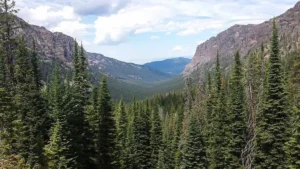
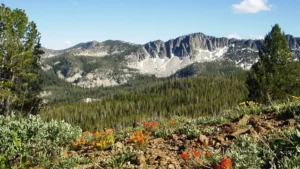
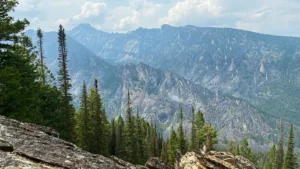
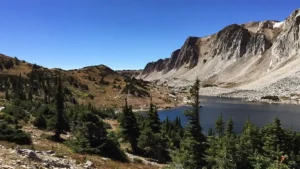
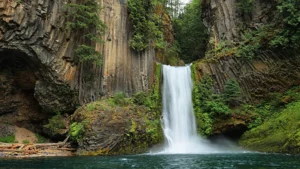
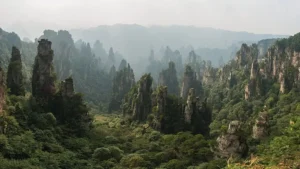
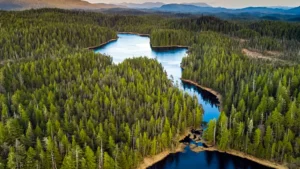
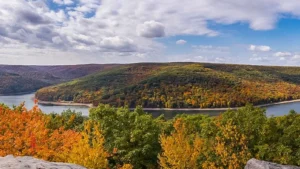
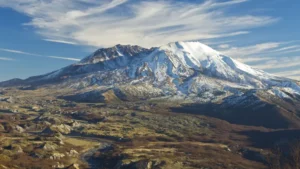
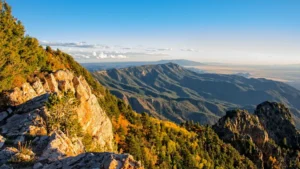
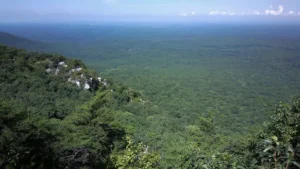
Leave your comment